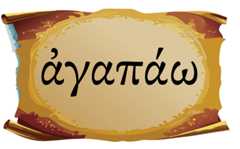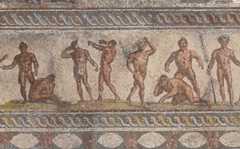Jesus Worship
When did the worship of Jesus as God begin?

Search the Bible
Q. When did the worship of Jesus, as God, rather than Messiah, Lord, and Savior, begin? And by whom?
A. First I have to address the wording of the question. It could be asking when/whether Jesus came tobe“God” or when “God” came to be re-signified as Jesus. There’s no evidence that Jesus replaced God or overwrote God (so to speak), at least not in the first couple of centuries. Subsequently, there have been Christians for whom God was Jesus, pure and simple. But that’s not what scholars find in the earliest centuries.
But I presume that you actually mean “when and where did Jesus first come to be reverenced as somehow really sharing in God’s status, or glory, and so the rightful recipient of worship along with God?” This has been a contested question for at least a century or more. Pretty much everyone is agreed that Jesus didn’t receive worship during his ministry. The key questions contested are how soon and where after Jesus’ crucifixion did it begin.
One view is that theworshipof Jesus as divine first appeared in the later decades of the first century, and likely in Gentile Christian circles (see the works of Dunn, Casey, and McGrath). But, over the last century or so, most scholars have agreed that the worship of Jesus as the divine “Lord” (Greek:Kyrios) began very early, within the very first years after Jesus’ crucifixion.
In an influential bookKyrios Christos, Wilhelm Boussettook this view, contending that this was the form of Christian faith that the apostle Paul was introduced to after his “conversion,” typically dated ca. 30-35 C.E. But Bousset also insisted that this treatment of Jesus as divine Kyrios couldn’t have happened in a thoroughly Jewish context (in which monotheistic concerns dominated), and so he placed the development in diaspora sites such as Antioch and/or Damascus (in Syria), where, he posited, pagan models of the divinization of heroes could have been influential.
In the last few decades, however, a growing number of scholars have argued that the earliest expressions of cultic reverence of Jesus as Lord were, indeed, in the very earliest years (likely earliest weeks or months) after Jesus’ crucifixion, but (contra Bousset) initially inJewishcircles of the Jesus-movement and in Roman Judaea (Palestine). Among the relevant works is my ownOne God, One Lord. Without getting into the details, my emphasis is on the constellation of specific devotional practices that expressed a reverence for Jesus as divine Lord.
Paul’s letters give every indication that the kinds of Jesus-reverence that he knew and affirmed were also practiced among Jewish circles of believers. The Aramaic liturgical expression, “Maranatha” (= “O/our, Lord, come!” cited in
Bibliography
- Dunn, James D. G.Did the First Christians Worship Jesus? The New Testament Evidence. London/Louisville: SPCK/Westminster John Knox Press, 2010.
- Casey, Maurice.From Jewish Prophet to Gentile God: The Origins and Development of New Testament Christology. Louisville; Cambridge: Westminster/John Knox Press; James Clarke and Co., 1991.
- McGrath, James F.The Only True God: Early Christian Monotheism in Its Jewish Context. Urbana: University of Illinois Press, 2009.
- Hurtado, Larry W.One God, One Lord: Early Christian Devotion and Ancient Jewish Monotheism. Philadelphia: Fortress Press, 1988; 2nd ed. Edinburgh/London: T&T Clark, 1998; 3rd ed., London: Bloomsbury T&T Clark, 2015).




